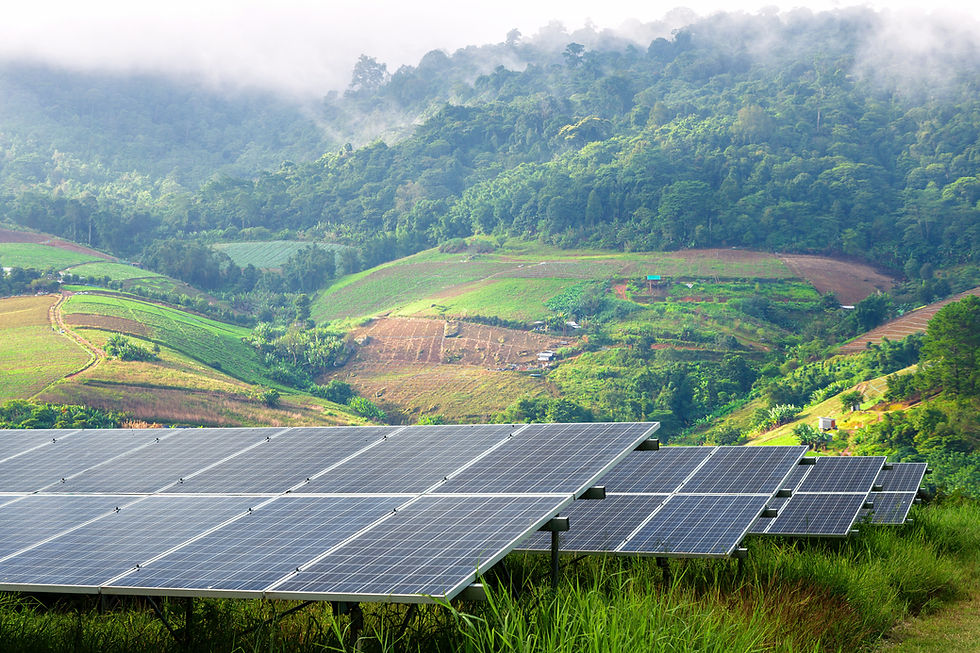.png)

How Carbon Credits Are Generated
Understanding Carbon Credits
Carbon credits are a crucial tool in the fight against climate change. They represent a reduction or removal of greenhouse gas emissions, measured in metric tons of CO2 or its equivalent (CO2e). By purchasing carbon credits, individuals, companies, and governments can offset their own emissions, contributing to a more sustainable future. But how exactly are these credits generated? It's a complex and detailed process that can take many months and even years. But let’s break it down into a few general steps.

01
Identifying a Project That Reduces Emissions
The first step in generating carbon credits is identifying a project that actively reduces or removes greenhouse gas emissions. These projects come in many forms, including:
-
Renewable Energy Projects: Wind, solar, and geothermal power installations that replace fossil fuel-based energy.
-
Forestry Projects: Reforestation, afforestation, and forest preservation efforts that absorb CO2 from the atmosphere.
-
Energy Efficiency Initiatives: Upgrading equipment or infrastructure to use less energy and reduce emissions.
-
Methane Capture: Preventing the release of methane from landfills, agriculture, or industrial processes.
Perhaps, one of the most innovative ways to generate carbon credits is by keeping fossil fuels, such as Carbon Intensive Oil, in the ground. This avoids the release of CO2 that would occur if these fuels were extracted and burned.
02
Establishing the Baseline Scenario
For a project to generate carbon credits, it must be shown that emissions would be higher without the project. This is known as establishing the "baseline scenario."
For example:
-
In renewable energy projects, the baseline is the emissions from traditional fossil-fuel power plants that would have generated the same amount of energy.
-
In oil preservation projects, the baseline is the carbon that would have been released if the oil had been extracted and burned.
The difference between the baseline emissions and the actual emissions after the project is the basis for calculating how many carbon credits can be generated.
03
Proving Additionality
A key requirement for generating carbon credits is "additionality." This concept requires that the project demonstrate it would not have been implemented without the incentive of carbon credits.
The methodology must show that the emission reductions are "additional," meaning they go beyond what would have occurred under normal conditions, i.e., the reductions wouldn’t have taken place without the carbon project.
For example, a Carbon-Intensive Oil asset might have been developed and brought to market based on a solid business case and regulatory approvals. However, if the decision is made to leave the oil untapped specifically to reduce emissions, carbon credits can be issued.

04
Measuring Emission Reductions
Once the project is underway, the next step is measuring how much CO2 or its equivalent has been prevented from entering the atmosphere. This involves:
-
Collecting Data: Regular monitoring of the project's impact on emissions.
-
Verifiable Calculations: Using scientifically accepted methods to quantify emission reductions. For example, in a renewable energy project, this would involve measuring how much fossil fuel-based energy has been displaced by renewable sources.
The total reduction is typically expressed in metric tons of CO2e, and each ton equates to one carbon credit.
05
Third-Party Verification
To ensure the integrity of the carbon credits, an independent third-party verifier must assess the project. They review the project's design, data, and calculations to confirm that the emission reductions are real, measurable, and additional.
This step is crucial for building trust in the carbon credit market. Organizations like the American Carbon Registry (ACR), Verra, Cercarbono and Gold Standard provide certification and verification services for carbon credit projects.
06
Certification and Issuance of Carbon Credits
Once issued, carbon credits can be bought and sold on carbon markets. Buyers, often corporations with significant emissions use these credits to compensate for the emissions they cannot reduce directly.
Each carbon credit can only be used once, ensuring that the environmental benefit is unique and permanent. After use, the credit is "retired" from the system, meaning it can no longer be traded or used again.